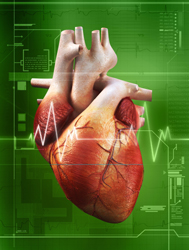What is behind cardiac arrhythmias?
Recent research indicates that hyperpolarisation-activated cyclic nucleotide-gated (HCN) channels and other novel mechanisms may play a role in the sustenance of arrhythmias. The current flowing through HCN channels, proteins serving as ion channels across the plasma membrane of heart and brain cells, plays an important role in the generation and modulation of cardiac rhythmicity. The 'Normal and abnormal cardiac excitation: generation, propagation, and coupling to contraction' (Normacor) project sought to gain novel insight into arrhythmogenic mechanisms and their related dynamics. Researchers studying individual arrhythmogenic aspects were brought together from eight laboratories in five EU Member States. The consortium thus aimed to consolidate and generate more knowledge on what mechanisms may become arrhythmogenic and how this phenomenon could be corrected or controlled. Research on specific HCN-selective drugs led to the synthesis of new molecules capable of modulating the current flowing through HCN channels. The particular features of these molecules, including high selectivity, may permit the development of novel drugs acting on channels specifically expressed in different human tissues. The specific Normacor result represents a major success in efforts to advance HCN channel blockers as therapies for the treatment of diseases such as neuropathic pain, arrhythmias or tachycardia. In addition, they may well reduce the risk of side effects. Project activities enhanced understanding of inherited heart rate disturbances and arrhythmias. Although no conclusive evidence was produced, investigations highlighted a link between a particular mutation and inappropriate sinus tachycardia syndrome. Another set of studies gathered experimental data for insight into ion channels, native cardiac tissue sections and 3D reconstructions of cardiac tissue detailed for structure and function. Shared standards were published for the developed modelling tools in order to facilitate their use and sharing among all Normacor project partners.

